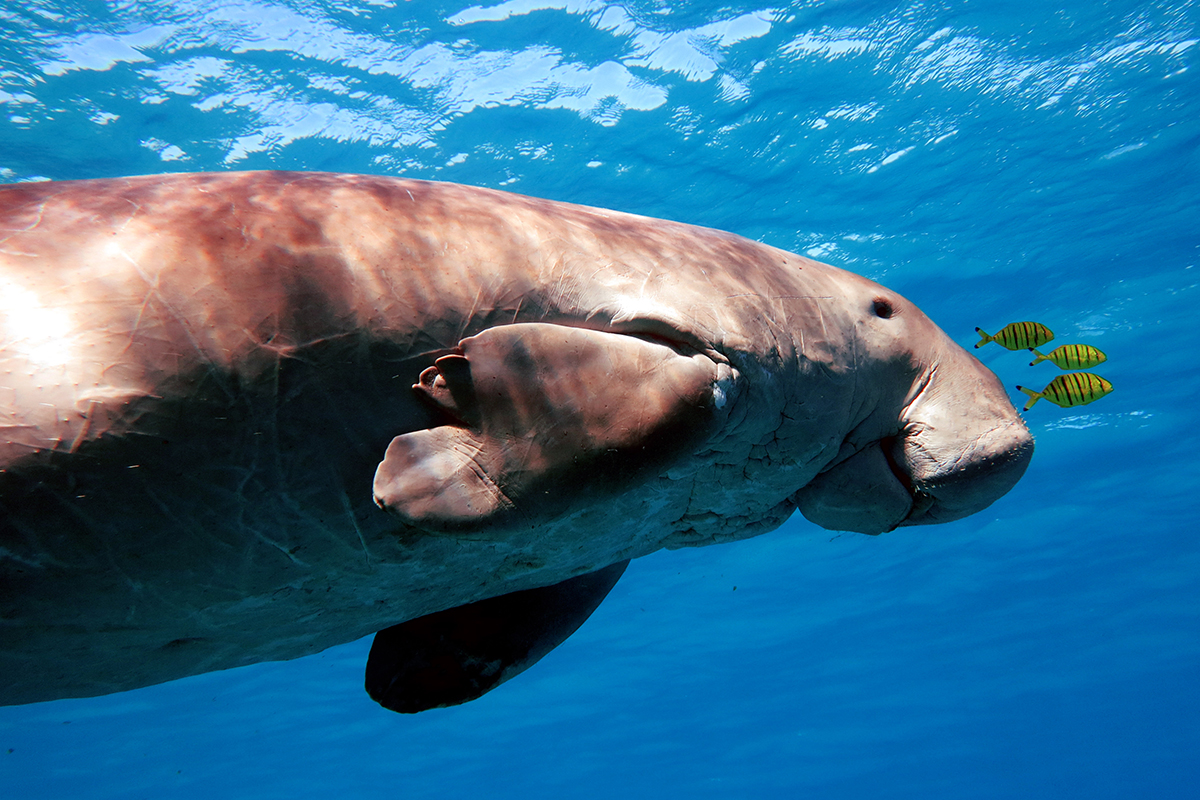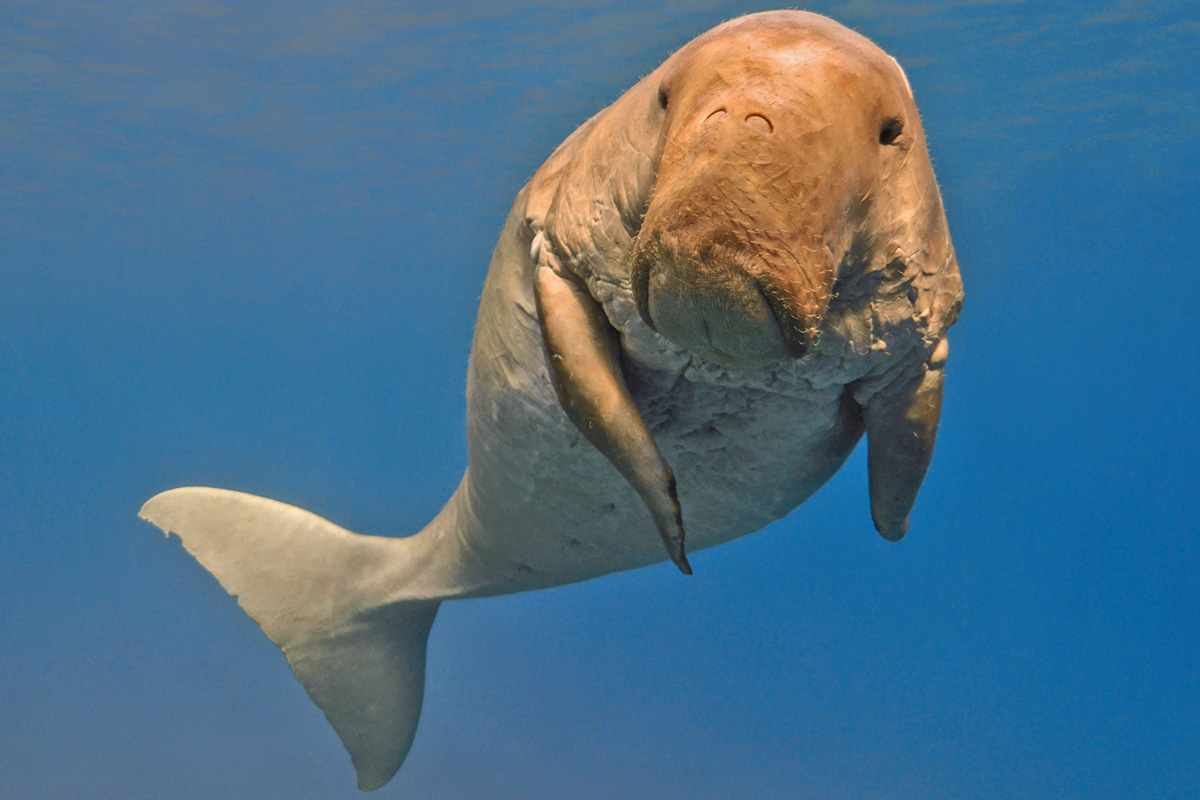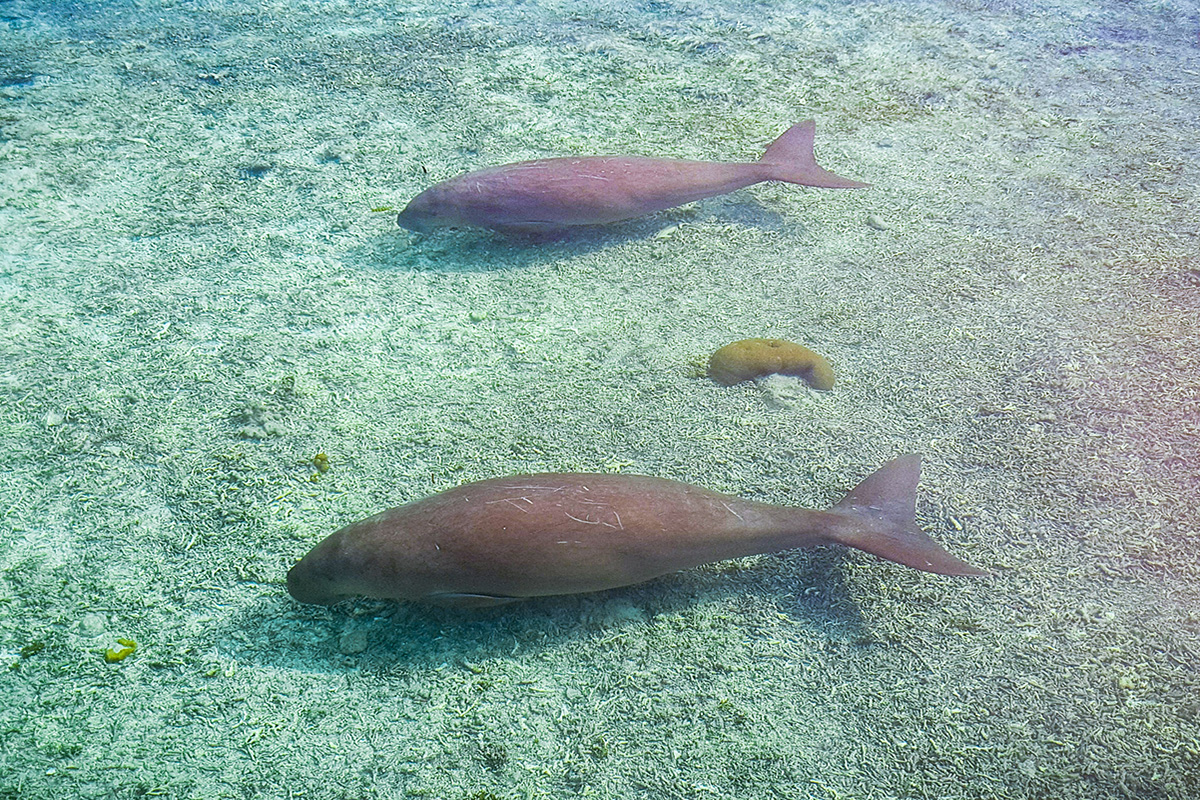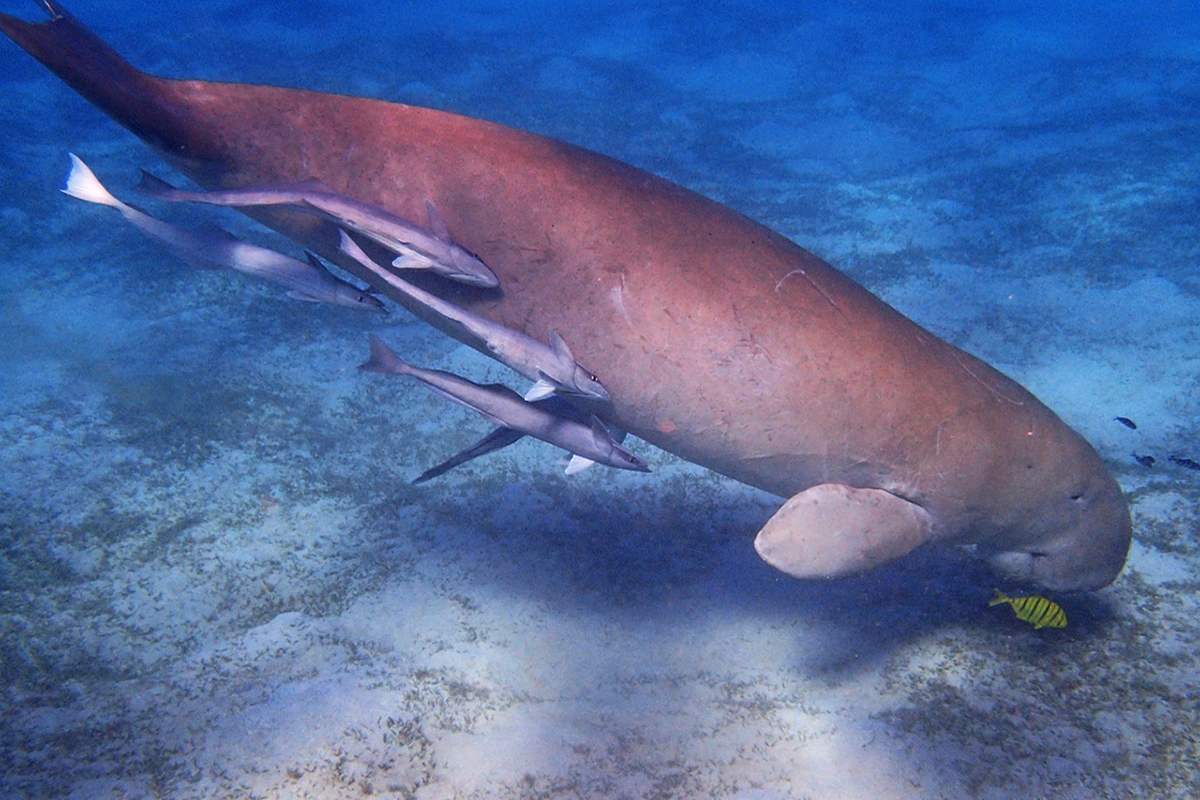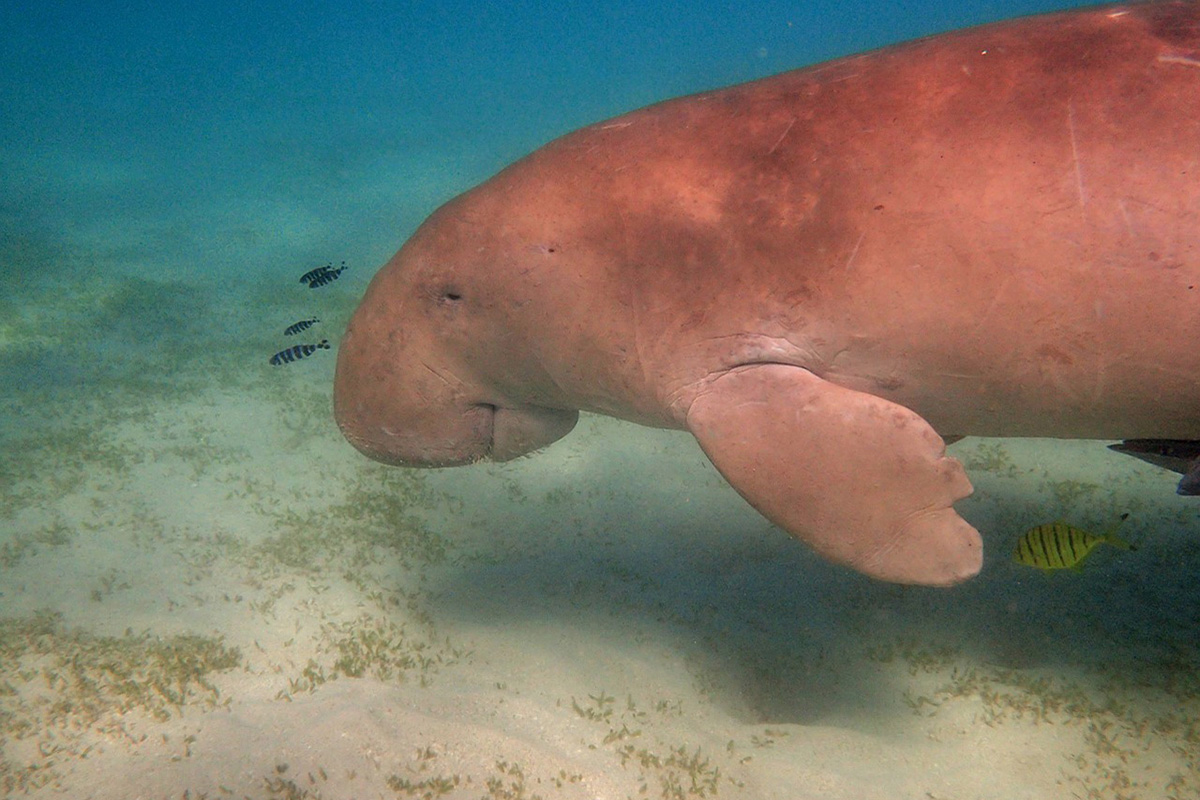5 Fascinating Facts About Dugongs
Dugongs are notoriously shy, but we are lucky enough to spot them quite regularly at Papua Paradise Eco Resort. Some fortunate guests have been able to watch them feeding on the house reef right below their over-water bungalows. Seeing one leaves you with a magical feeling like you have been chosen to attend a very rare and special event. If you don’t know much about dugongs or would like to learn more, read on. We have 5 fascinating facts about dugongs for you today.
1. Mistaken Identity
There are many reports of sailors and fishermen seeing mermaids that were actually most likely dugongs. You may wonder how a large grey marine mammal could look like a beautiful sea siren, but dugongs are known to rise from the sea on their tails in a tail stand. This, from a distance, can look very human.
The word Dugong comes from the Malay for ‘lady of the sea’. Cave drawings of dugongs around 3000 years old have been discovered in Malaysia. In Pulau folklore also stretches far back with stories of young women being transformed into dugongs and saving fishermen lost at sea.
2. Elephants of the Sea
Even though dugongs are often referred to as ‘sea cows’, they are actually related to elephants. Their last common ancestor may have been 60 million years ago but it is possible to see resemblances.
Both dugongs and elephants are thought to have evolved from primitive hoofed mammals called condylarths. Sirenia, which includes dugongs, manatees, and the now-extinct Stellar’s sea cow, are very remote to Cetacea (whales and dolphins) and Pinnipedia (seals, sea lions and walruses), which may seem like more likely relatives.
3. Social Life
Dugongs are very social creatures and are usually seen in pairs. However, they can be found in groups of up to 200! This is rare though as there isn’t usually enough seagrass in an area to support a group of this size. They have also been found to use similar noises to whales and dolphins to communicate with each other. The whistles, barks and chirps they make can travel long distances underwater.
Around Papua Paradise, pairs have been spotted grazing around the house reef. As some dugongs travel long distances and others stay around the same area for life, we hope they often come back to our resort.
Dugongs at Papua Paradise Eco Resort, Raja Ampat
Look at the beautiful couple who visited us yesterday morning… ? we feel so blessed to watch these amazing creatures swim in sync right under our jetty ?? #dugongs #manatee #morningsurprise #underwater #marinelife #divelovers #animallovers #naturelovers #rajaampat #indonesia #papapuaparadise #eco #resort #ganggadivers #diving #paradise
Posted by Papua Paradise Eco Resort & Gangga Divers on Friday, April 6, 2018
4. Long Lives
After mating dugongs have a gestation period of 12-14 months. After birth, they nurse for at least 18 months and will rarely be seen away from their mother. They stay with their mother for 6 to 9 years, which is why mother-calf pairs are often spotted together. Sometimes they even catch a ride on their mother’s back. However, I suppose relative to a lifetime of 70+ years this isn’t such a long time.
5. Conservation
Unfortunately, dugongs are a threatened species. This is mostly due to human activity. They often get caught in fishing nets and because they feed in shallow waters, are susceptible to boat-related injuries. With their slow reproduction rates, every dugong death has a serious effect on their population.
They are listed as vulnerable on the IUCN Red List and the Convention on Internations Trade in Endangered Species. They are also listed as endangered on the US Federal List. In Indonesia, they are protected, but as with most laws in Indonesia, it is difficult to enforce this without community support. Thankfully in Raja Ampat, many local people are now committed to protecting dugongs and NGOs are doing great work educating and putting money into their protection.
Dugongs are special creatures and we are so lucky to see them around Papua Paradise Eco Resort. We do everything in our power to keep them coming back to feed on the seagrass in the shallows off the coast of Birie Island. Is the dugong on your bucket list of species to see? We’d love to hear if it is or even if you’ve been lucky enough to see one already. Leave us a comment in the box below.

